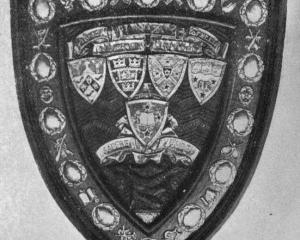About 50 per cent of the output is taken by the Government requirements in khaki for military purposes, some 40,000 yards, in the single, of this material being made besides ordinary civilian orders.
To weave this the mill has to dye and spin no less than 129,000,000 yards of yarn out of Hawke's Bay wool.
It is found that Hawke's Bay wool is admirably suited for khaki-especially for the heavy overcoating in which that mill specialises.
During the last year the management has been experimenting with electricity for seed burr and foreign impurities extraction from wool.
The method is now in general operation, and is eminently successful and inexpensive, the invention being an extremely valuable one.
The old method of carbonisation with sulphuric acid was always a bugbear to manufacturers, because of its cost of 1/4d to 1/2d per lb, and more so because sulphuric acid diminishes the natural strength of the wool fibre; it reduces its milling qualities by injuring the serratures on the fibre surface, and gives an undesirable harshness of handle to the wool.
All the fibre's good qualities are maintained rather than otherwise by the company's new invention.
• In his address at the Garrison Hall last night, the Hon. Mr Allen (Minister of Defence) stated that before the end of December the military authorities in New Zealand would require 10,564 men and 3650 horses for service, and that by April of next year an additional 5300 men and 1500 horses would be required.
Speaking subsequently on the matter to a Daily Times reporter, the Minister said that although 10,564 men were wanted before the end of the year the registration ought to be considerably in excess of that number, as they had to allow for 40 per cent of medical rejects.
Therefore, between the present time and the close of the year the four districts - Auckland, Wellington, Canterbury, and Otago - ought to find, inclusive of the 40 per cent for medical rejects, about 4350 men each, or a total of 17,400 men.
• A valuable collection of trophies from the German cruiser Emden was landed from the steamer Montoro at Sydney recently, and created considerable interest.
The relics were secured from the wreck, which is lying on North Keeling (Cocos Group).
A marine on a warship engaged in the salvage work states that his ship was at Cocos Island for six days, and that he was aboard the wreck of the Emden every day.
The divers were looking for a torpedo.
''I am pleased,'' he says,'' that they got one all complete.
We had a hard job getting it out of the submerged torpedo flat.
There were a lot of dead German sailors down there, and when the divers stirred things up it was very disagreeable.
We also got two of her guns.
One is going to England with the torpedo, and the other to Australia as a curio.
Another thing we got was a searchlight, and 6000 Chinese dollars and some good sets of doctors' instruments.
The torpedo is worth £800 to £900.
We had a cablegram from the Admiralty praising us for the work we had done.
Our captain was so pleased that he gave us 36 hours' leave.''
- ODT, 1.5.1915.
• COPIES OF PICTURE AVAILABLE FROM ODT FRONT OFFICE, LOWER STUART ST, OR WWW.OTAGOIMAGES.CO.NZ












